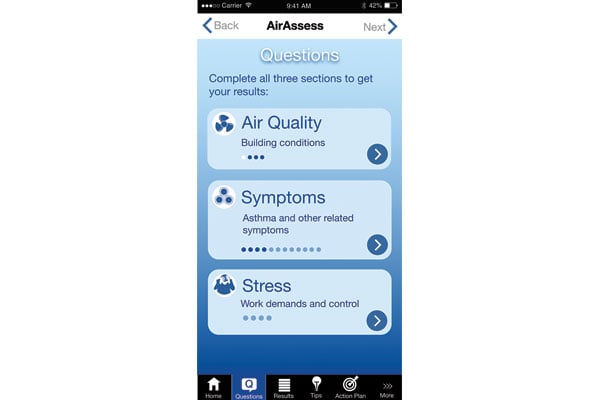The quality of air that individuals breathe at work can affect their health, comfort...

The quality of air that individuals breathe at work can affect their health, comfort and productivity. The Occupational Health Clinics for Ontario Workers (OHCOW) has collaborated with the Canadian Centre for Occupational Health and Safety (CCOHS) to develop a mobile app to help individuals find solutions to indoor air quality problems in their workplace.
The app, AirAssess – Improve Indoor Air Quality at Work, provides users with a questionnaire that answers simple questions about their current work conditions such as workplace stress levels, allergies and environmental factors. The answers to these questions provide key information to help uncover issues that may be related to the air quality in the workplace. Once the questionnaire is answered, the app will look for links and provide users with ideas to help their workplace take action on the possible air quality issues.
“We are putting health and safety in the hands of workers. Assess your air, share the results, brainstorm solutions and breathe easier,” said Valerie Wolfe, executive director, south central region, OHCOW.
All jurisdictions in Canada include the general duty clause that requires employers to provide a healthy and safe workplace. This includes the provision of healthy indoor air. In addition, indoor air quality is implied in most building codes as design and operation criteria.
Common issues associated with air quality include: improper or poorly maintained heating and ventilation systems; contamination by construction materials, glues, fibreglass, particle boards, paints and chemicals; and an increase in number of building occupants and time spent indoors, said CCOHS.
Poor indoor air quality can lead to dryness and irritation of the eyes, nose, throat and skin, headaches, fatigue, shortness of breath, hypersensitivity and allergies, sinus congestion, coughing and sneezing, dizziness, and nausea. People generally notice their symptoms after several hours at work and feel better after they have left the building or when they have been away from the building for a weekend or a vacation.





